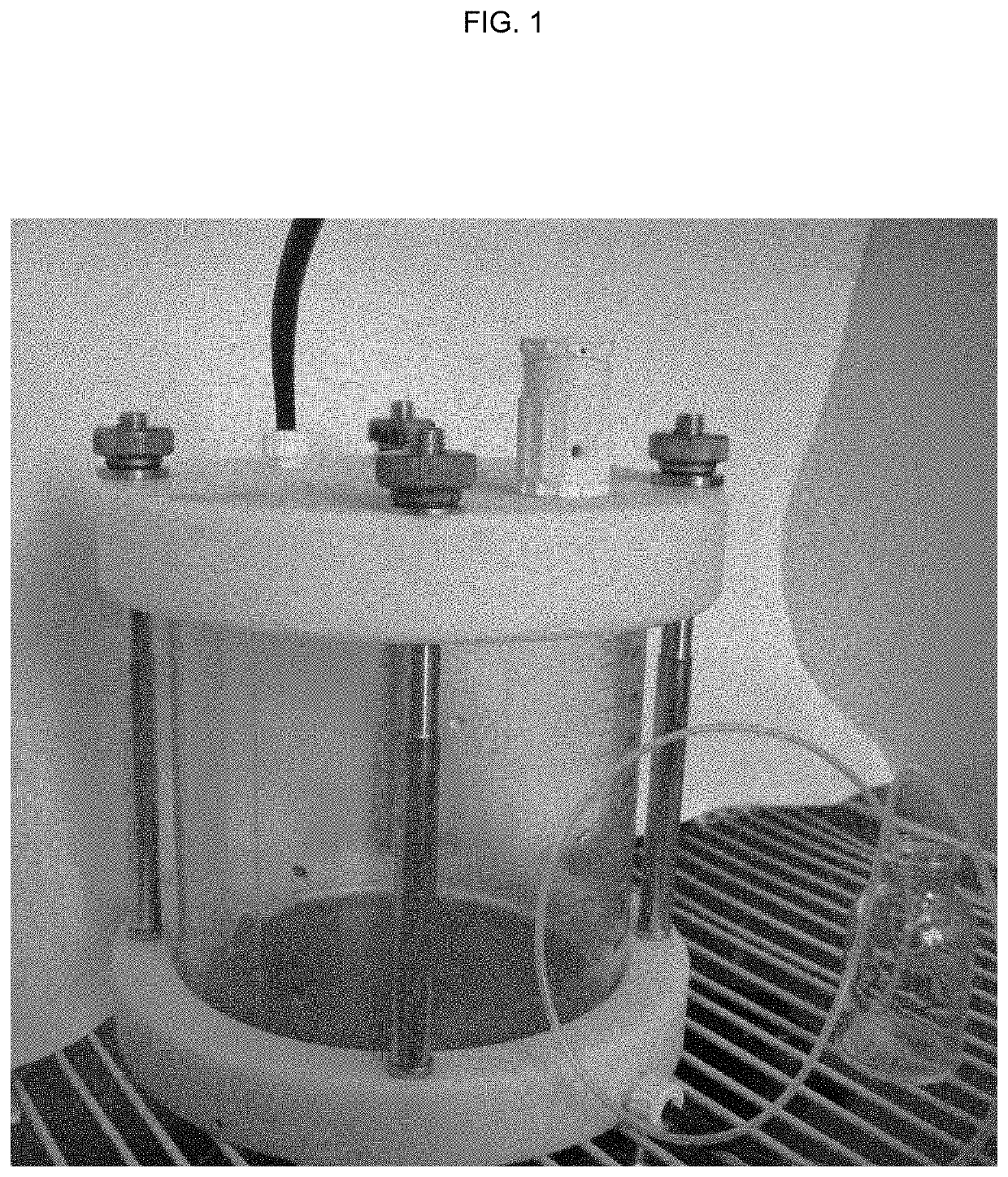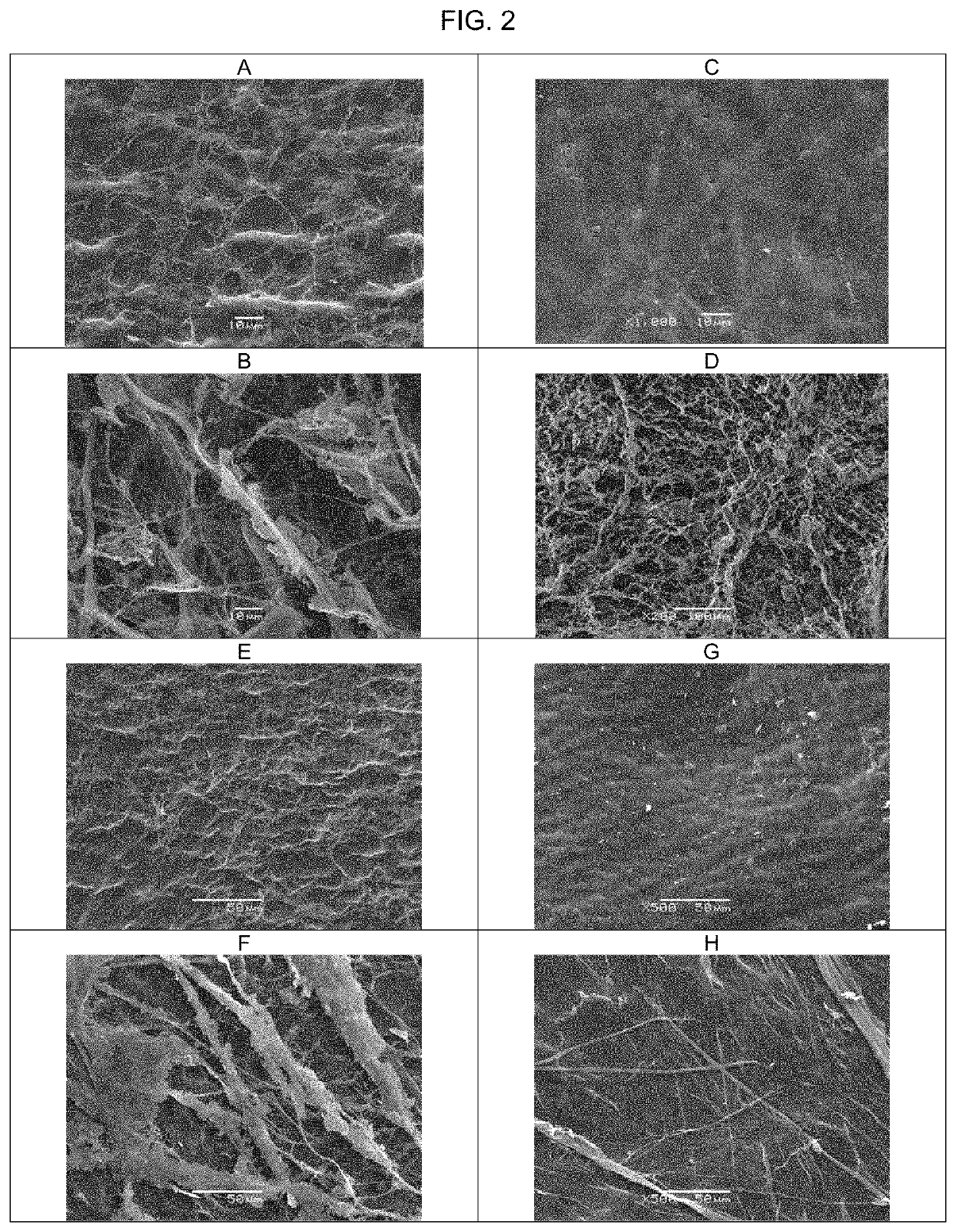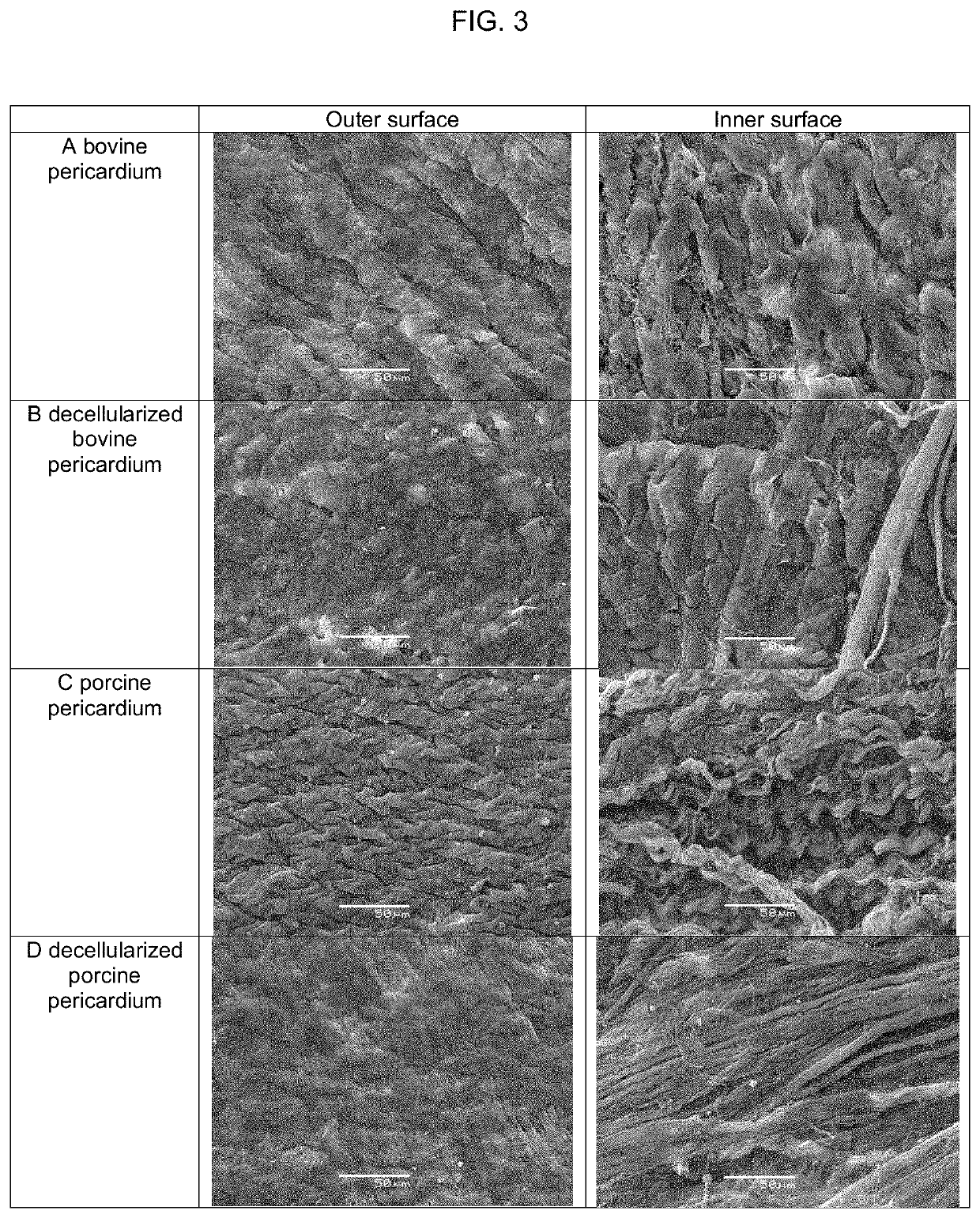Decellularization method
a tissue decellularization and tissue technology, applied in the field of tissue decellularization, to achieve the effect of enhancing blood compatibility and biocompatibility, reducing mineralization, and reducing tissue immunogenicity
- Summary
- Abstract
- Description
- Claims
- Application Information
AI Technical Summary
Benefits of technology
Problems solved by technology
Method used
Image
Examples
embodiment
Preparation Example 1
[0054]Solution Preparation
[0055]Phosphate-buffered saline (PBS) (Sigma, cat n, P4417-100TAB): 1 tablet was dissolved in pyrogen-free water as recommended.
[0056]1M CaCl2): 2.22 g of CaCl2) was added to 20 ml of deionized water and stored at 4° C.
[0057]1M MgCl2: 2.033 g of MgCl was added to 10 ml of deionized water and stored at 4° C.
[0058]DNAse I solution: 10 mg DNAse I (Sigma D5025) (final concentration 0.2 mg / ml), 50 ul 1 M MgCl2 (final concentration 5 mM), and 50 ul 1 M CaCl2) (final concentration 5 mM) in 4.9 ml of sterilized water were dispensed into 1.5 ml microtubes marked for cooling, and stored refrigerated at −20° C.
[0059]RNAse A solution: 100 mg of RNAse A was added to 10 ml of sterilized water, mixed, and dissolved, and 500 ml thereof was dispensed into each of 20 previously cooled 1.5 ml microtubes and stored at −20° C.
[0060]Nuclease solution: 1 ml of 2 mg / ml DNAse 1 and 1 ml of 10 mg / ml RNAse A were added to 98 ml PBS, 1 M MgCl2 (final concentration...
preparation example 2
[0078]Solution Preparation
[0079]The following solution was further used in the same solution as in Preparation Example 1.
[0080]Folch solution: 25 mass % of chloroform, 25 mass ater, and 50 mass % of ethanol were mixed,
[0081]Decellularization of Porcine Pericardium
[0082]The step of washing the tissue with the Folch solution was added, after the step of the second day, to the same process as in Preparation Example 1.
embodiment 1
[0083]Method for Measuring Calcium in Tissue Sample
[0084]Each recovered tissue was washed three times with 10 ml of sterile PBS free of calcium and magnesium. Calcium was quantified by X-ray photoelectron spectroscopy (XPS) at 30 points of the leaves and skirt of the detached plate. XPS analysis was performed with a SPECS electron spectrometer (SPECS GmbH, Germany) equipped with a PHOIBOS-150 MCD-9 hemispherical analyzer and a non-monochromatic MgK source. To prevent thermal degradation of the sample, the X-ray gun was positioned 30 mm away from the sample holder and operated only at 100 W. Spectra were recorded with pass energies set to have 50 eV (irradiation scan) and 10 eV (high resolution scan). Prior to the measurement, the energy scale was calibrated using Au4f7 / 2 (84.00 eV) and Cu2p3 / 2(932.67 eV) peak of gold and copper thin films. The residual gas pressure while obtaining the spectrum as less than 3×10−7 Pa. The sample was mounted on a steel sample holder using 3M® conducti...
PUM
| Property | Measurement | Unit |
|---|---|---|
| pressure | aaaaa | aaaaa |
| mass % | aaaaa | aaaaa |
| temperature | aaaaa | aaaaa |
Abstract
Description
Claims
Application Information
 Login to View More
Login to View More - R&D
- Intellectual Property
- Life Sciences
- Materials
- Tech Scout
- Unparalleled Data Quality
- Higher Quality Content
- 60% Fewer Hallucinations
Browse by: Latest US Patents, China's latest patents, Technical Efficacy Thesaurus, Application Domain, Technology Topic, Popular Technical Reports.
© 2025 PatSnap. All rights reserved.Legal|Privacy policy|Modern Slavery Act Transparency Statement|Sitemap|About US| Contact US: help@patsnap.com



